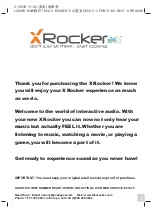
820i Programmable HMI Indicator/Controller
62
Visit our website
8.0
Setpoints
The
820i
indicator provides 100 configurable setpoints for control of both indicator and external equipment functions. Setpoints
can be configured to perform actions or functions based on specified parameter conditions. Parameters associated with various
setpoint kinds can, for example, be configured to perform functions (print, tare, accumulate), to change the state of a digital
output controlling indicator or external equipment functions, or to make conditional decisions.
Weight-based setpoints are tripped by values specified in primary units only.
8.1 Batch and Continuous Setpoints
820i
setpoints can be either continuous or batch setpoints.
Continuous setpoints
are free-running: the indicator constantly monitors the condition of free-running setpoints at each A/D
update. The specified setpoint action or function is performed when the designated setpoint parameter conditions are met. A
digital output or function assigned to a free-running setpoint continuously changes state, becoming active or inactive, as
defined by the setpoint parameters.
Batch setpoints
are active one at a time, in an ordered sequence. The
820i
can use setpoints to control up to 100 separate
batch processing steps.
A digital output associated with a batch setpoint is active until the setpoint condition is met, then latched for the remainder of the
batch sequence.
To use batch setpoints, you must activate the BATCHNG parameter on the SETPTS menu. This parameter defines
whether a batch sequence is automatic or manual. AUTO sequences repeat continuously, while MANUAL sequences
require a BATSTRT signal. The BATSTRT signal can be initiated by a digital input, serial command,
Batch Start
softkey, or the StartBatch function in an
iRite-IDE
program.
For setpoint kinds that can be used as either continuous or batch setpoints, the BATCH parameter must also be set
ON. (Setpoint kinds that can only be used as batch setpoints do not require the BATCH parameter.) If the setpoint is
defined but the BATCH parameter is off, the setpoint operates as a continuous setpoint, even during batch sequences.
In applications that contain both batch setpoint routines and continuous setpoints, continuous setpoints should be
kept separate from the batch sequence. This is especially true when using CONCUR or TIMER setpoints to perform
actions or functions based on the batch sequence. CONCUR and TIMER setpoints should not be included in the
referenced START and END setpoint sequence.
Kind
Description
Batch
Continuous
OFF
Setpoint turned off/ignored.
GROSS
Gross setpoint. Performs functions based on the gross weight. The target weight entered is considered
a positive gross weight.
X
X
NET
Net setpoint. Performs functions based on the net weight. The target weight entered is considered a
positive net weight value.
X
X
–GROSS
Negative gross weight. Performs functions based on the gross weight. The target weight entered is
considered a negative gross weight.
X
X
–NET
Negative net weight. Performs functions based on the net weight. The target weight entered is consid
-
ered a negative net weight value.
X
X
ACCUM
Accumulate setpoint. Compares the value of the setpoint to the source scale accumulator. The accumu
-
lator setpoint is satisfied when the value of the source scale accumulator meets the value and condi
-
tions of the accumulator setpoint.
X
X
ROC
Rate-of-change setpoint. Performs functions based on the rate-of-change (ROC) value.
X
X
+REL
Positive relative setpoint. Performs functions based on a specified value above a referenced setpoint,
using the same weight mode as the referenced setpoint.
X
X
–REL
Negative relative setpoint. Performs functions based on a specified value below a referenced setpoint,
using the same weight mode as the referenced setpoint.
X
X
Table 8-1. Setpoint Kinds
Note
Note
Содержание 820i
Страница 115: ......
















































